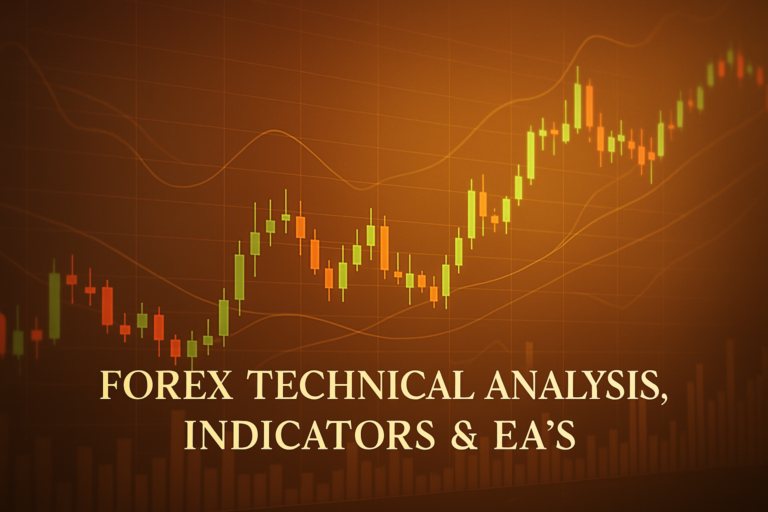
Leverage Changes Without Notice can impact your trading strategies; understanding this issue is key to successful Forex trading.
In the world of Forex trading, one significant issue that traders frequently face is the problem of leverage changes without notice. This unexpected shift can lead to serious financial consequences, making it essential for both beginner and professional traders to understand its implications. When leverage changes without prior warning, traders often find themselves in precarious situations, risking more than they originally planned.
Many traders struggle with this issue because they are unaware of the factors that can trigger sudden changes in leverage. Whether you are just starting or have years of experience, grasping the importance of this problem can help you make better decisions in your trading journey. Understanding and solving this issue can protect your investments and enhance your trading experience.
For those looking to improve their trading skills, a comprehensive forex trading tutorial can be quite beneficial.
Understanding the Problem
Leverage changes without notice occur when a broker alters the leverage ratios offered to traders without prior information. This can happen due to various market conditions, regulatory changes, or even technical issues. For example, if a broker decides to reduce the leverage from 100:1 to 50:1 during a volatile market, a trader’s position may be affected significantly. This change can lead to margin calls or even stop-outs, where traders lose their positions entirely.
Another common scenario is during major news events, such as economic releases or geopolitical tensions, where brokers may adjust leverage to manage risks. Imagine a trader who has placed a large position based on high leverage, only to find out that the leverage has been reduced just moments before an important announcement. This can turn a potentially profitable trade into a significant loss in seconds.
Solutions for Leverage Changes Without Notice
Dealing with leverage changes without notice can be challenging, but there are steps you can take to mitigate the impact and protect your investments.
Step-by-Step Solutions
- Stay Informed: Regularly check your broker’s policies regarding leverage changes. Subscribe to their newsletters or notifications.
- Set Alerts: Use trading platforms that allow you to set alerts for significant market events or changes in leverage.
- Use Stop-Loss Orders: Protect your trades by using stop-loss orders to limit potential losses.
- Practice with a Demo Account: Familiarize yourself with how leverage works and its implications through a demo account.
Best Practices for Avoiding Leverage Changes
To avoid facing leverage changes unexpectedly in future trades, consider the following best practices:
- Use Risk Management: Always assess your risk tolerance and manage your position sizes accordingly.
- Diversify Your Trades: Don’t put all your capital into one trade; spread it across various assets.
- Monitor Market Conditions: Be aware of upcoming economic events that may lead to volatility and potential leverage changes.
Pro Tips & Warnings for Advanced Traders
For advanced traders, it’s crucial to be aware of the following:
- Use Advanced Trading Software: Employing sophisticated forex trading software can help in monitoring leverage changes efficiently.
- Maintain a Cash Reserve: Having a cash reserve can help you manage margin calls effectively.
- Understand Your Broker: Each broker has different policies; choose one that aligns with your trading style.
Frequently Asked Questions
How do I detect this issue in real-time?
To detect leverage changes in real-time, regularly monitor your trading platform for any notifications. Some platforms provide alerts when leverage is modified. Staying connected with your broker’s updates can also help.
Can brokers legally do this?
Yes, brokers can legally change leverage ratios, but they must usually inform their clients about the changes. However, some brokers may implement changes without prior notice during extreme market conditions.
What tools can I use to prevent this?
Using risk management tools such as stop-loss orders and trading alerts can help prevent the adverse effects of sudden leverage changes. Additionally, keeping an eye on market news can give you a heads-up.
Is this problem more common in specific market conditions?
Yes, leverage changes are more common during high volatility periods, such as major news releases or economic announcements. Being aware of these times can help you prepare.
What should I do if my leverage changes unexpectedly?
If your leverage changes unexpectedly, assess your current positions and determine if you need to adjust them. You may need to reduce your position size or close some trades to manage your risk effectively.
How can I choose a reliable broker?
Research brokers thoroughly by reading reviews and checking their regulations. Ensure they have a transparent policy regarding leverage and communicate changes to their clients effectively.
What impact does leverage have on my trading?
Leverage amplifies both potential profits and losses. Understanding how leverage works is essential for effective risk management and to avoid significant losses.
Conclusion
Understanding leverage changes without notice is crucial for successful Forex trading. By being informed and adopting best practices, you can manage and even avoid these issues. Staying updated on market conditions and leveraging risk management techniques will enhance your trading strategies.
User Engagement & Encouragement Stay proactive in learning about Forex trading to overcome challenges like leverage changes without notice. Your journey to success starts now!
Recommended Next Steps
- Review your broker’s leverage policies regularly.
- Practice risk management techniques.
- Stay updated on market news and trends.
- Utilize trading software to monitor changes effectively.
- Engage with other traders to share experiences and tips.
To explore the topic from another angle, refer to this informative source EToro Academy, FX Empire
Expand Your Knowledge
- 📌 Forex Trading Learning Road Map
- 📌 Forex Trading Course with no Fees
- 📌 Forex Trading Issues, Problems, and Solutions
- 📌 Forex Daily Forecast & Live Updates
- 📌 Forex Fundamental & News Analysis: Tomorrow’s Market Movers & Trade Opportunities
- 📌 Forex Education Hub: Learn & Profit
- 📌 Forex Technical Analysis, Indicators & EA’s
Start Trading Today
Ready to take your forex trading to the next level? Open an account with Exness, one of the most trusted platforms in the industry. 👉 Sign Up Now and trade with confidence!
My recommended broker stands out with ultra-low spreads for beginners, instant withdrawals, and zero spread accounts for pro traders.
Trusted since 2008, lightning-fast execution, no hidden fees, and a secure, transparent trading environment—giving you the edge you need to succeed. 🚀
Watch this helpful video to better understand Leverage Changes Without Notice:
Note: The video above is embedded from YouTube and is the property of its original creator. We do not own or take responsibility for the content or opinions expressed in the video.
In the video, the host Artie explains the fundamentals of leverage trading and how to effectively use lot sizes in the forex market. The first step to understanding forex trading is to grasp the concept of a pip, which is the smallest price movement in a currency pair. For example, when trading the popular Euro to USD pair, a pip is measured by the fourth decimal place. If the exchange rate moves from 1.17835 to 1.17935, that’s a gain of 10 pips. Artie breaks down the three main lot sizes used in trading: micro (0.01), mini (0.10), and standard (1.00). Each lot size corresponds to a different potential profit per pip. For instance, with a micro lot, you earn 10 cents per pip, while a mini lot nets you a dollar, and a standard lot earns you ten dollars per pip. This structure helps traders calculate their potential profits based on their lot sizes and the pips gained or lost during trades.
Artie also discusses the importance of leveraging in forex trading. Without leverage, most traders wouldn’t be able to afford a standard lot size, which represents 100,000 units of currency. Leverage allows traders to control larger positions with smaller amounts of capital. In the U.S., the maximum leverage is typically 1:30, meaning a $100 account can control up to $3,000 in trades. Artie warns against using high leverage ratios offered by unregulated brokers, as they can lead to significant losses. He emphasizes the importance of proper risk management and suggests using online position size calculators to help determine potential profits and losses for different scenarios. Overall, the video serves as a helpful guide for beginners looking to navigate the complexities of forex trading while understanding how to use leverage and lot sizes to their advantage.
For those interested in specific currency pair analyses, the AUDUSD analysis April 10, 2025 provides insights that can help inform trading strategies. This analysis will offer up-to-date evaluations and forecasts for the Australian dollar against the U.S. dollar, making it a valuable resource for traders looking to make informed decisions in the forex market.



